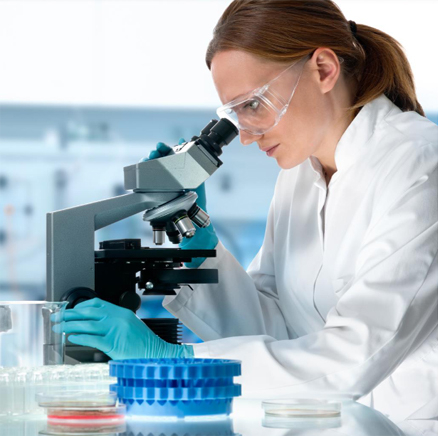Sample Process
Sample Procurement
The technique of double cell separation is applied depleting that way erythrocytes and accomplishing a small final cryopreservation volume which allows better viability and reclamation.
Patient’s protection from the complications of severe haemolysis and the toxic cryoprotectant reagent (DMSO) is accomplished by this procedure and gives the potential of partial freezing and multiple use of the sample.
The cryopreservation of large volume samples results in stem cell’s death during defrozing as during that step, DMSO and hemoglobin must be removed. Large volume cryopreservation demands plastic freezing bags and cryopreservation in liquid nitrogen vapor phase.
Cryopreservation
The cryopreservation is taking place with a validated, digitally adjustable, controlled rate freezing procedure. The procedure, as it is described above, provides gradual transition in lower temperatures and higher cell viability.
Storage
Samples are fully immersed into the liquid nitrogen in a stable temperature of -196˚C, according to the only published protocol which excellent viability results of the stem cells even after 15 years of cryopreservation (Broxmeyer et al 2003, PNAS, 100: 645-650). It is generally accepted that this preservation protocol is the only one which promises unlimited viability time (up to 2000 years) and for this reason it is followed by the biggest private cord blood banks of the world.
On the contrary, public banks, limiting the use of the umbilical cord blood stem cells only for haematopoietic diseases, without substantial financial resources, they store their samples in liquid nitrogen vapour phase as they do not aim in long term preservation.
The preservation places are completely secure, monitored in a 24-hours basis and away from sources of radioisotopes and ionized radiation
Processing takes place in a closed system, without the transplant coming into contact with the environment, with a modification of Rubinstein’s classic protocol, using our own patented processing sac. Only materials approved the Hellenic Drug Organization (Hetastarch 10%) are used and removal of red blood cells is achieved from the total freezing volume by 98%. The recovery of nucleated cells of the transplant after processing is close to 100%.
These results are certified from measurements done by a haematic analyser and with a flow cytometer, of 2006 technology (Beckman Coulter). For the measurement of haemopoietic stem cells from the transplant, we only use the reagent kit (stem Kit TM Beckman Coulter) approved for clinical use by the EU.
Our company uses specially EU approved cryovials (CE), accredited by AABB, that ensure the stable cryopreservation conditions and the theoretical indefinite viability. The cryovials are numbered with a unique code which is also written as a barcode so that it can be read by a computer.
The cryovials are equipped with a special gasket which renders them impenetrable to liquids and are also wrapped in a special protective tube (cryoflex). Therefore the 100% protection of your child’s transplant is ensured.
Freezing before placing the graft in liquid nitrogen takes place gradually with a special digitally operated apparatus. This process ensures the viability of the stem cells after thawing.
The cryopreservation containers contain an automated filling system and the liquid level and temperature of their surface are checked on a 24-hour basis by using a special alarm system as well as TV surveillance.
Quality control of the sample includes: 1) measurement of the number and viability of the stem cells by using the reagent kit (stem Kit TM Beckman Coulter) approved for clinical use by the EU before and after the process and after thawing of a small volume, 2) bacterial check with the sensitive Bactec system and 3) culture for the confirmation of cell colony development.
Depending on the quantity of the cells contained in the final sample volume, it is adjusted to fit in between two to six cryovials. One part of the sample is preserved in one of Biohellenika’s cryopreservation banks in Thessaloniki and the second in the bank in Athens. This increases the chance of survival in the event of a natural disaster and provides the opportunity of secondary use of the initial sample, without thawing and re-freezing.

